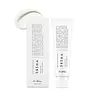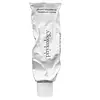What's inside
What's inside
 Key Ingredients
Key Ingredients

 Benefits
Benefits

 Concerns
Concerns

 Ingredients Side-by-side
Ingredients Side-by-side

Water
Skin ConditioningPropanediol
SolventGlycerin
HumectantCyclohexasiloxane
Emollient1,2-Hexanediol
Skin ConditioningCaprylic/Capric Triglyceride
MaskingDicaprylyl Carbonate
EmollientPolyglycerin-3
HumectantPolyglyceryl-10 Stearate
Skin ConditioningHydrogenated Polydecene
EmollientLaminaria Japonica Extract
Skin ProtectingEclipta Prostrata Leaf Extract
Skin ConditioningOenothera Biennis Flower Extract
AstringentPerilla Ocymoides Leaf Extract
TonicLavandula Angustifolia Flower Extract
CleansingSargassum Fulvellum Extract
Skin ConditioningCentella Asiatica Leaf Extract
Skin ConditioningGardenia Florida Fruit Extract
Skin ConditioningCalendula Officinalis Flower Extract
MaskingMelia Azadirachta Flower Extract
Skin ConditioningHouttuynia Cordata Extract
Skin ConditioningMelia Azadirachta Leaf Extract
Skin ConditioningCurcuma Longa Root Extract
MaskingOcimum Sanctum Leaf Extract
Skin ConditioningAgave Tequilana Leaf Extract
AstringentCorallina Officinalis Extract
Skin ConditioningHibiscus Sabdariffa Flower Extract
Skin ConditioningSodium Hyaluronate
HumectantHydrogenated Lecithin
EmulsifyingPelargonium Graveolens Flower Oil
MaskingEmpetrum Nigrum Fruit Juice
Skin ConditioningAmmonium Acryloyldimethyltaurate/Vp Copolymer
C14-22 Alcohols
Emulsion StabilisingC12-20 Alkyl Glucoside
EmulsifyingAcrylates/C10-30 Alkyl Acrylate Crosspolymer
Emulsion StabilisingButylene Glycol
HumectantPolyquaternium-51
Skin ConditioningTromethamine
BufferingFructooligosaccharides
HumectantAdenosine
Skin ConditioningBeta-Glucan
Skin ConditioningGlycine Soja Sterols
EmollientHydrolyzed Hyaluronic Acid
HumectantResveratrol
AntioxidantGlucose
HumectantOligopeptide-1
Skin ConditioningCeramide NP
Skin ConditioningPEG-40 Castor Oil
EmulsifyingEthylhexylglycerin
Skin ConditioningCitronellol
PerfumingGeraniol
PerfumingLinalool
PerfumingWater, Propanediol, Glycerin, Cyclohexasiloxane, 1,2-Hexanediol, Caprylic/Capric Triglyceride, Dicaprylyl Carbonate, Polyglycerin-3, Polyglyceryl-10 Stearate, Hydrogenated Polydecene, Laminaria Japonica Extract, Eclipta Prostrata Leaf Extract, Oenothera Biennis Flower Extract, Perilla Ocymoides Leaf Extract, Lavandula Angustifolia Flower Extract, Sargassum Fulvellum Extract, Centella Asiatica Leaf Extract, Gardenia Florida Fruit Extract, Calendula Officinalis Flower Extract, Melia Azadirachta Flower Extract, Houttuynia Cordata Extract, Melia Azadirachta Leaf Extract, Curcuma Longa Root Extract, Ocimum Sanctum Leaf Extract, Agave Tequilana Leaf Extract, Corallina Officinalis Extract, Hibiscus Sabdariffa Flower Extract, Sodium Hyaluronate, Hydrogenated Lecithin, Pelargonium Graveolens Flower Oil, Empetrum Nigrum Fruit Juice, Ammonium Acryloyldimethyltaurate/Vp Copolymer, C14-22 Alcohols, C12-20 Alkyl Glucoside, Acrylates/C10-30 Alkyl Acrylate Crosspolymer, Butylene Glycol, Polyquaternium-51, Tromethamine, Fructooligosaccharides, Adenosine, Beta-Glucan, Glycine Soja Sterols, Hydrolyzed Hyaluronic Acid, Resveratrol, Glucose, Oligopeptide-1, Ceramide NP, PEG-40 Castor Oil, Ethylhexylglycerin, Citronellol, Geraniol, Linalool
Undaria Pinnatifida Extract
Skin ConditioningPropanediol
SolventDicaprylyl Carbonate
EmollientSqualane
EmollientCoco-Caprylate/Caprate
EmollientLimnanthes Alba Seed Oil
Skin ConditioningCetyl Alcohol
EmollientPhytosteryl/Behenyl/Octyldodecyl Lauroyl Glutamate
Skin ConditioningLaminaria Japonica Extract
Skin ProtectingEclipta Prostrata Leaf Extract
Skin ConditioningCentella Asiatica Extract
CleansingFicus Carica Fruit Extract
HumectantHydrogenated Lecithin
EmulsifyingSodium Hyaluronate
HumectantBehenyl Alcohol
EmollientPolyglyceryl-2 Stearate
EmulsifyingCetearyl Olivate
Sorbitan Olivate
EmulsifyingCetearyl Alcohol
EmollientSodium Stearoyl Glutamate
CleansingGlyceryl Stearate
EmollientStearyl Alcohol
EmollientGlyceryl Stearate Se
EmulsifyingAcrylates/C10-30 Alkyl Acrylate Crosspolymer
Emulsion StabilisingArginine
MaskingAmmonium Acryloyldimethyltaurate/Vp Copolymer
Hydrogenated Olive Oil Unsaponifiables
EmollientCholesterol
EmollientXanthan Gum
EmulsifyingFructooligosaccharides
HumectantCeramide NP
Skin ConditioningBeta-Glucan
Skin ConditioningTrisodium EDTA
Hydrolyzed Hyaluronic Acid
Humectant1,2-Hexanediol
Skin ConditioningEthylhexylglycerin
Skin ConditioningUndaria Pinnatifida Extract, Propanediol, Dicaprylyl Carbonate, Squalane, Coco-Caprylate/Caprate, Limnanthes Alba Seed Oil, Cetyl Alcohol, Phytosteryl/Behenyl/Octyldodecyl Lauroyl Glutamate, Laminaria Japonica Extract, Eclipta Prostrata Leaf Extract, Centella Asiatica Extract, Ficus Carica Fruit Extract, Hydrogenated Lecithin, Sodium Hyaluronate, Behenyl Alcohol, Polyglyceryl-2 Stearate, Cetearyl Olivate, Sorbitan Olivate, Cetearyl Alcohol, Sodium Stearoyl Glutamate, Glyceryl Stearate, Stearyl Alcohol, Glyceryl Stearate Se, Acrylates/C10-30 Alkyl Acrylate Crosspolymer, Arginine, Ammonium Acryloyldimethyltaurate/Vp Copolymer, Hydrogenated Olive Oil Unsaponifiables, Cholesterol, Xanthan Gum, Fructooligosaccharides, Ceramide NP, Beta-Glucan, Trisodium EDTA, Hydrolyzed Hyaluronic Acid, 1,2-Hexanediol, Ethylhexylglycerin
 Reviews
Reviews

Ingredients Explained
These ingredients are found in both products.
Ingredients higher up in an ingredient list are typically present in a larger amount.
1,2-Hexanediol is a synthetic liquid and another multi-functional powerhouse.
It is a:
- Humectant, drawing moisture into the skin
- Emollient, helping to soften skin
- Solvent, dispersing and stabilizing formulas
- Preservative booster, enhancing the antimicrobial activity of other preservatives
Acrylates/C10-30 Alkyl Acrylate Crosspolymer is a synthetic polymer. It is used to thicken and improve the texture of products. Due to its properties, it can prevent water and oil ingredients from separating.
Ammonium Acryloyldimethyltaurate/Vp Copolymer (let's call it AAVC for short) is a synthetically created polymer. It's used as a film-forming agent and used to thicken the consistency of products.
AAVC is able to increase the consistency and viscosity of products due to its large molecule size. It also prevents ingredients from separating.
Beta-Glucan is a polysaccharide. It can be derived from the cell walls of seaweed, oats, yeast, and fungi. It hydrates the skin and helps boost your skin's natural barrier.
As an antioxidant, beta-glucan helps fight free-radicals. Free-radicals are molecules that may damage your skin cells, such as pollution.
Studies show this ingredient may be an effective wrinkle reducer as it can deeply penetrate into skin. It has also been show to help with wound healing.
Learn more about Beta-GlucanCeramide NP is a type of ceramide and formally known as ceramide 3.
Ceramides are intercellular lipids naturally found in our skin that bonds dead skin cells together to create a barrier. They are known for their ability to hold water and thus are a great ingredient for dry skin.
Ceramides are an important building block for our skin barrier. A stronger barrier helps the skin look more firm and hydrated. By bolstering the skin ceramides act as a barrier against irritating ingredients. This can help with inflammation as well.
If you would like to eat ceramides, sweet potatoes contain a small amount.
Read more about other common types of ceramides here:
Ceramide AP
Ceramide EOP
Dicaprylyl Carbonate comes from carbonic acid and caprylyl alcohol, a fatty alcohol. It is an emollient and gives skin a velvet feel. The sources of Dicaprylyl Carbonate may be synthetic or from animals.
As an emollient, Dicaprylyl Carbonate creates a film on the skin. This film traps moisture in, keeping your skin soft and hydrated.
Eclipta Prostrata Leaf Extract comes from the false daisy plant. False daisy contains antioxidant compounds such as flavonoids.
One study found false daisy to absorb UVA and UVB radiation. However, this should not replace your sunscreen.
False daisy is used in both traditional medicines and foods throughout Southeast Asia and India.
Learn more about Eclipta Prostrata Leaf ExtractEthylhexylglycerin (we can't pronounce this either) is commonly used as a preservative and skin softener. It is derived from glyceryl.
You might see Ethylhexylglycerin often paired with other preservatives such as phenoxyethanol. Ethylhexylglycerin has been found to increase the effectiveness of these other preservatives.
Fructooligosaccharides is an alternative sweetener. It is often derived from the blue agave plant.
This ingredient is a prebiotic and helps to hydrate the skin. Emerging studies are also showing fructooligosaccharides to have antioxidant properties.
As a humectant, Fructooligosaccharides helps draw moisture to the skin, helping to hydrate the skin.
Bananas, onions, garlic, asparagus, jícama, and leeks also contain fructooligosaccharides.
Learn more about FructooligosaccharidesHydrogenated Lecithin is created from the hydrogenation of lecithin (a group of phospholipids). Hydrogenation is a chemical reaction between hydrogen and another element.
This ingredient is an emollient and emulsifier. As an emollient, it helps soften skin by trapping moisture within. As an emulsifier, it prevents oil and water ingredients from separating.
Hydrolyzed Hyaluronic Acid is a form of hyaluronic acid. It is created by the hydrolysis of hyaluronic acid with a high molecular weight. Once created, Hydrolyzed Hyaluronic Acid has a low molecular weight.
Low molecular weight HA has been shown to hydrate and increase elasticity of the skin. Increasing elasticity is also associated with reduction of wrinkle depth.
One study found topical low molecular weight hyaluronic acid may be considered for the treatment of rosacea in the adult population. However, we always recommend speaking with a professional about your skin concerns.
Hyaluronic acids are a humectant. This means they draw moisture from the air. Hyaluronic acids help moisturize, soothe, and protect the skin.
Read more about other common forms of hyaluronic acid:
Learn more about Hydrolyzed Hyaluronic AcidLaminaria Japonica Extract comes from a kelp more commonly known as 'sweet kelp'. It is commonly eaten in Japan, Korea, and China.
Sweet kelp is a humectant and helps hydrate your skin. Humectants draw moisture from the air to your skin.
Studies show Laminaria Japonica has antioxidant compounds. Antioxidants may help with anti-aging. Kelp also contains magnesium and zinc, making it great for calming inflammation and redness.
Learn more about Laminaria Japonica ExtractPropanediol is an all-star ingredient. It softens, hydrates, and smooths the skin.
It’s often used to:
Propanediol is not likely to cause sensitivity and considered safe to use. It is derived from corn or petroleum with a clear color and no scent.
Learn more about PropanediolSodium Hyaluronate is hyaluronic acid's salt form. It is commonly derived from the sodium salt of hyaluronic acid.
Like hyaluronic acid, it is great at holding water and acts as a humectant. This makes it a great skin hydrating ingredient.
Sodium Hyaluronate is naturally occurring in our bodies and is mostly found in eye fluid and joints.
These are some other common types of Hyaluronic Acid:
Learn more about Sodium Hyaluronate